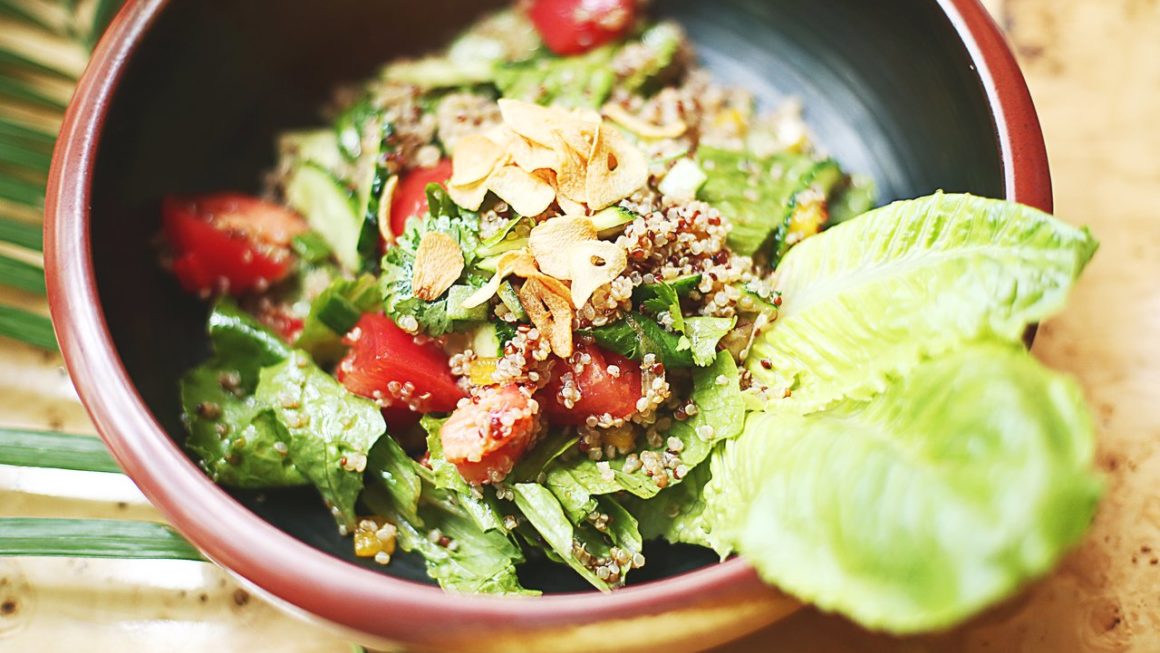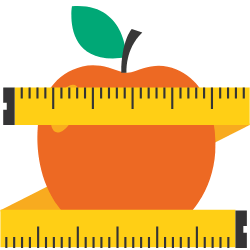Since gluten is a component of wheat protein, it is found in all foods made from wheat. Most noteworthy gluten sources are pastas, breads, pancakes and sweet pastry. Further, gluten containing products may include condensed milk, ice cream, vegetable purees, and even various sauces.
In such food products, gluten is used as a thickener – it is due to its content in the composition that a pleasant airy texture is achieved. As a reminder, gluten proteins have a unique ability to trap gas – which has both benefits and downsides.

What is gluten?
Gluten is a group of proteins found in starch of cereals. Note that proteins of the gluten group are found exclusively in cereals – wheat, barley, rye and oats. Gluten is not found in meats, vegetables (including legumes) and fruits, mushrooms, nuts and berries.
Up to 85% of the total protein content in wheat comes from gliadins, prolamins and glutelin’s – different types of gluten. Celiac disease is an acute allergic reaction exclusively to the gliadin protein.
Oatmeal contains gluten as well. We are talking about avenins – a form of gluten proteins that are extremely poorly digested by the human stomach. Interestingly, the formal answer to the question “is there gluten in oatmeal?” Is yes. However, this gluten cannot affect the body due to its indigestion.

Lactose and Casein
It is important to separate allergies to gluten, casein and lactose. Casein is a gluten-like protein found in dairy products that can irritate the intestines. Lactose, in turn, is milk sugar, which requires a special enzyme (not found in some people) to break it down.
In other words, thick dairy products can simultaneously contain gluten, lactose and casein. The list primarily includes yoghurt and processed cheese (e.g. shredded or sliced). Also, on the list is ice cream – which also contains gluten in waffles.


What foods contain gluten?
Since wheat gluten is considered one of the most versatile food ingredients, a complete list of foods that can contain gluten covers almost all industrially manufactured foods. It is the gluten that forms the texture and prolongs the shelf life.
Under the name modified wheat starch, stabilizer, and hydrolyzed protein, gluten can be found in foods that do not involve wheat at all, such as sweet curds, baby fruit purees, and chocolates.
In addition, gluten can get into dried fruits and nuts during processing and packaging. Exactly as in oatmeal – oat grains are often milled on the same equipment as wheat.
Complete list of foods containing gluten:
- cereals (wheat, barley, rye and oats)
- cereal products (bran, bread, baked goods)
pasta - breaded foods (nuggets, chicken wings)
- bouillon cubes and mixes
- most canned meat
- ready-made vegetable soups
- crackers and most types of chips
- waffles and most types of sweets
- some types of chocolate
- most cereals
- most condensed milk
- thick sauces (ketchup, tomato paste, sometimes teriyaki sauce)

- thick and sweet yoghurts
- some thick drinks (jelly)
- some curd products
- some types of ice cream
- some types of sausages
- some types of semi-finished meat products
- gin, whiskey, beer
- some types of sports nutrition
Use in cosmetics
Among other things, wheat products are used in the cosmetics industry. Small amounts of gluten can be found in powders, mascara, lipstick, toothpaste, shampoos, and shower gels.
While this is safe for most people, it can cause irritation if you are allergic to gluten.
Foods containing gluten can harm the human body for several reasons. First, some people have a food allergy to gliadin – in their case, the stomach is disrupted and the immune system is inhibited.
Secondly, foods with gluten are often high on the glycemic index and can lead to weight gain. Thirdly, the indirect harm of gluten is that it provokes fermentation.
Why does the belly grow?
Wheat gluten proteins are capable of trapping carbon dioxide while yeast can provide the rising effect similar to its function in dough.
For the same reason, foods containing gluten (primarily bread and pasta) absorb moisture and increase their volume during digestion. Gradually, the habit of feeling satiety from food is developed in the form of a stomach swollen with gases.
Are gluten free foods good or bad?
Not all gluten-free foods are healthy. Gluten is not found in high-carbohydrate or high-fat foods – including caramel, soda, and refined vegetable oils. Many products do not contain this substance, but they cannot be called useful.
A complete elimination of gluten is recommended only if you have celiac disease. In other cases, harm manifests itself only due to the high calorie content of wheat products, as well as due to the habit of overeating until the feeling of a “full stomach”. At the same time, the harm of gluten to the body of an ordinary person has not been confirmed by research
Recent research suggests that gluten can harm the metabolism of even those who are not allergic to the substance. Gluten appears to lower the body’s energy requirements for basic metabolism – in other words, it slows down the metabolism.
A gluten-rich diet often contains too much salt and saturated fat – which can harm your waistline and hinder weight loss. In addition, if you are allergic to gluten, it is extremely important to monitor the correctness of the diet, since the immune system is disrupted.
Gluten - benefits and harms
Scientifically, gluten is just a wheat protein with a fairly low absorption rate. In other words, it is not needed by the body and is not an important part of the diet. The benefits of gluten are expressed solely in the fact that it allows the baking process.
Due to its special structure, gluten can retain carbon dioxide – which, in combination with yeast, ensures the rise of the dough. However, it is this ability that harms the body. First of all, the destructive reaction starts in the intestines – which provokes other health problems.
Leaky gut, caused by gluten intolerance, reduces the absorption of vitamins and minerals and also leads to skin problems. In turn, the problem with the absorption of nutrients can negatively affect the entire body.
Allergies and intolerances
The harm of gluten to the body is manifested in the form of a congenital disease called celiac disease. In addition, there is a bacterium Pseudomonas aeruginosa – it interferes with the work of enzymes that destroy gluten, provoking inflammatory processes in the intestines.
The first symptoms of gluten intolerance are puffiness, skin rashes (in more rare cases, acne). Problems with digestion gradually develop. In case of infection with Pseudomonas aeruginosa, bad breath appears.
Remember also that gluten is a group of different proteins. Most often, allergies are manifested when eating wheat and rye, while the gluten contained in oatmeal affects the body differently.
How does gluten prevent weight loss?
Scientific research in animals showed that gluten-fed individuals gained more weight when following a diet with the same amount of calories. They also had a different composition of adipose tissue – according to the results, the diet with gluten affected the metabolic processes involving oxygen.
In addition, gluten can affect a number of hormones produced in the visceral fat. In particular, we are talking about the hunger hormone leptin. As a reminder, obesity is often associated with leptin resistance – the body’s inability to correctly send satiety signals.
Potential harm from gluten:
- reduces the needs of basic metabolism
- affects the metabolic processes involving oxygen
- affects visceral fat hormones
- increases the level of microinflammation
Wheat problem
Separately, it should be mentioned that most foods containing wheat gluten have a high glycemic index – we are talking about white bread, various pastries, waffles and other sweets. In fact, these types of foods lead to overeating – which is detrimental to weight loss.
Due to changes in blood sugar levels caused by excessive consumption of wheat products with gluten, the normal production of the hormone insulin is disrupted – provoking the development of diabetes. This disease, in turn, causes complex harm to the health of the body and brain.
Bowel harm
Another study examining the symptom of “leaky gut” suggests that gluten intolerance is associated with a decrease in immunity due to dysfunction of the intestinal microflora. In fact, the body’s ability to resist infections of various natures decreases.
To make matters worse, gluten-rich diets often contain too much salt, trans fats, and saturated fatty acids, from cheese pizza to canned stew pasta. At the same time, such a diet is associated with a lack of vegetables and sources of fiber.
Oftentimes, it’s not just giving up gluten itself that’s good for losing weight but avoiding gluten-containing foods. In this case, the diet is based on vegetables and whole grains, which means that the amount of fiber in the diet increases and in turn helps maintain a stable blood sugar level.
The harm of gluten consists both in a negative effect on the body (in case of intolerance) and in metabolic disorders caused by excessive consumption of wheat products. First of all, bowel function suffers, then skin problems arise, and immunity becomes impaired.
Gluten is a group of proteins that make up the starch of cereals. This substance is found in large quantities in any products made from wheat. In addition, gluten is used in many ready-to-eat foods and even in cosmetics.
Which vegetable contains the most carbs?
| Great, this is the right answer. Lentils contain 20.3 grams of carbohydrates, versus 10.4 for onions and 7.2 for carrots. | |
| Oops, sorry that answer is wrong. Lentils contain 20.3 grams of carbohydrates, versus 10.4 for onions and 7.2 for carrots. | |
| Oops, sorry that answer is wrong. Lentils contain 20.3 grams of carbohydrates, versus 10.4 for onions and 7.2 for carrots. |



